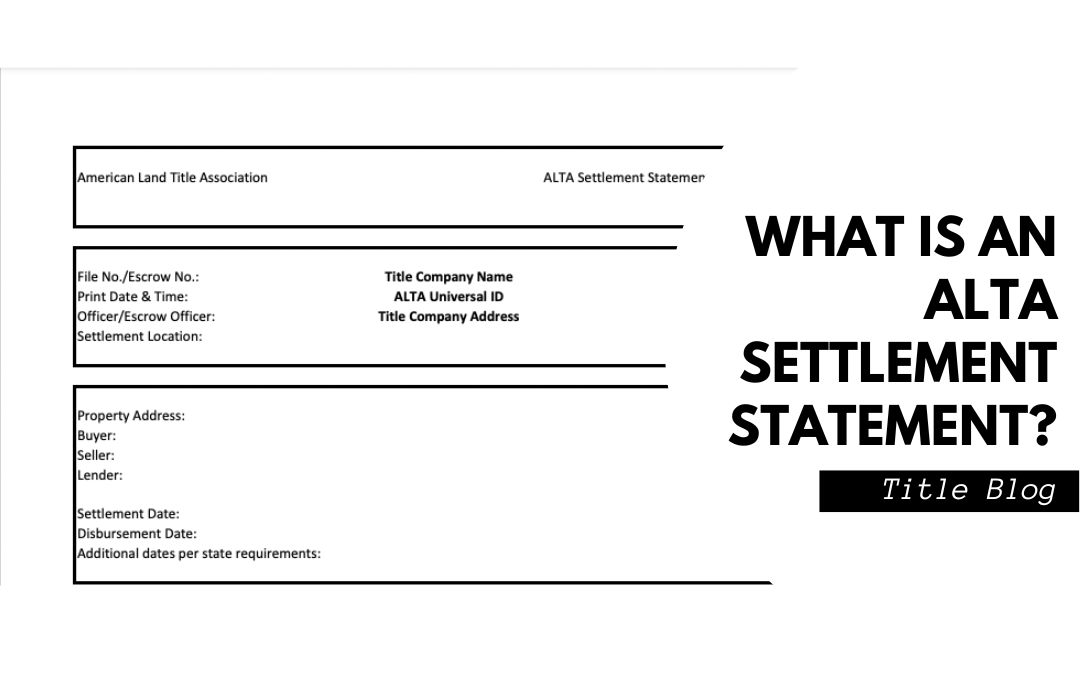A Settlement Statement is a standardized document that a buyer gets at a real estate closing that summarizes the terms and conditions of a loan, plus lists all charges and credits to the buyer and to the seller in a real estate settlement.
It is also used in a mortgage refinance to list all the charges.
According to ALTA’s Website:
“ALTA created model Settlement Statements based on the settlement statements that are used today in conjunction with the HUD-1. These Settlement Statements are intended to provide uniformity to the marketplace and may be used alongside the Closing Disclosure to help the industry meet its legal and regulatory obligations. If a Settlement Statement is used, the totals must match the Closing Disclosure.”
Is a HUD-1 and a Good Faith Estimate (GFE) the same thing as an ALTA settlement statement?
The short answer is no. They are not exactly the same thing but serve a similar purpose – which is to disclose all of the details of your purchase including charges and credits.
With so many types of documents that serve a similar purpose, it is no wonder that many home buyers get them confused.
New regulations set forth by The Consumer Financial Protection Bureau (CFPB) in 2015 including The Real Estate Settlement Procedures Act (RESPA), and specifically The Truth in Lending Act (TILA) created a set of similar documents to make the process easier for consumers to understand.
If you got your mortgage prior to October 2015, you received a HUD-1 statement. If you got a mortgage after that date, you likely received an ALTA Settlement Statement.
What does ALTA stand for in real estate?
ALTA is simply the acronym for American Land Title Association, which is basically the national associate for title insurance companies, escrow companies, abstract companies, and settlement services – depending on where you are located in the United States.
ALTA is the organization that provides the ALTA statement and helps title insurance agents adhere to new regulations in most states in the United States.
Who provides the ALTA statement?
A settlement statement is typically provided to the homebuyer and a seller by the company you are working with to close your real estate transaction.
Most often be provided to by the mortgage lender, settlement agent, abstract company, title and escrow company, or a real estate attorney – depending on where you live.
A closing disclosure is exclusively used by the buyer (or borrower for transactions that involve a mortgage), an ALTA settlement state is given to both the agents, brokers and consumers on both sides of the transaction.
It is like a receipt that both parties acknowledge during the real estate closing process, as it lists the charges and credits for both parties involved.
Is an ALTA settlement statement required?
It depends on what type of purchase is being made.
ALTA statements aren’t required by law for all transactions but are meant to be used with the Closing Disclosure that both buyers and sellers are required to receive per the Consumer Financial Protection Bureau (CFPB).
A settlement statement is required anytime a mortgage loan will be taken out on a property. This includes purchases, refinances, and commercial purchases alike.
ALTA Settlement Statements allow title and escrow companies or real estate attorneys alike to itemize all the fees and charges that both the homebuyer and seller face during the process of purchasing a home or a piece of property.
Since fees and local title insurance customs differ between regions, they were designed to be modified and expanded to allow agents to list any fees that may be applicable in their state or county, in addition to the national fees.

